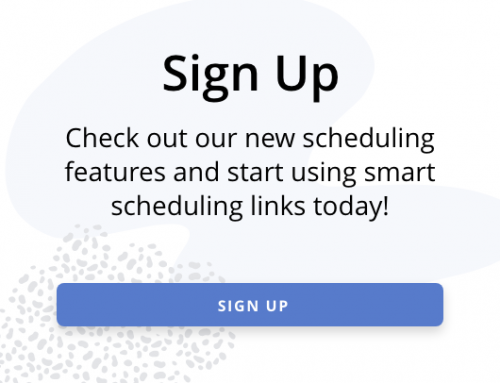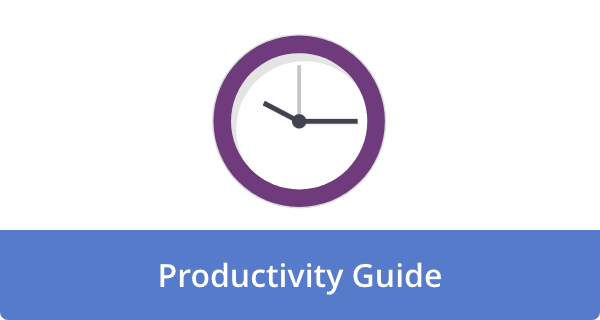

Do you ever feel like you’re constantly chasing the clock only to find it slipping further away? As we all know, time is valuable, but it can seem impossible to find in today’s frantic world. The secret isn’t about grinding harder; it’s about working smarter.
Imagine being able to achieve more, stress less, and actually have time for the things you love. Are you ready to overcome overwhelm and reclaim your schedule? If so, let’s explore eleven powerful time management strategies that can transform your days from chaotic to controlled.
You have likely heard of many of these terms and techniques, but the key is to keep reviewing your goals and conquering little bits of your time management strategy over time. Each time you work to boost your productivity, you’ll soar for a long while, and then, maybe you have to refresh again. Don’t drive yourself insane — just get a little better each week or month.
1. The SMART Goal System
Imagine your goals being laid out in a clear roadmap rather than vague aspirations. To accomplish this, you need SMART objectives: Specific, Measurable, Achievable, Relevant, and Time-bound. Using this system, you can set goals that aren’t just dreams but doable steps towards achieving them.
- Be specific. Define your goals with crystal clarity. Instead of “improve my time management,” strive to “dedicate 30 minutes a day to my most important task.”
- Measurable. Metrics can be used to track progress. Examples include minutes spent on focused work, tasks completed, or projects completed.
- Achievable. Set realistic, challenging goals that keep you motivated without discouraging you. It is better to start small and gradually increase the duration of your focused work instead of going from zero hours to eight hours a day.
- Relevant. It’s essential to align your goals with your overall values and long-term plans. For example, completing projects on time and attending meetings prepared might be relevant time management goals if you aim for a promotion.
- Time-bound. Set deadlines to create a sense of urgency and accountability. For example, I plan to implement the Pomodoro Technique next week.
Overall, with SMART goals, your vague intentions will become concrete achievements.
2. Prioritize with the Eisenhower Matrix
Have you ever felt overwhelmed by a mountain of tasks? The Eisenhower Matrix, also known as the Urgent-Important Matrix, will help you prioritize everything like a pro. According to this simple yet powerful tool popularized by former president Dwight Eisenhower, tasks can be divided into four quadrants;
- Urgent & Important. These tasks should be completed as soon as possible. These are the fires that need to be put out.
- Important but Not Urgent. Put these tasks on hold for later. Investing in them is a long-term investment that pays off in the long run.
- Urgent but Not Important. You should delegate these tasks if you can. Often, they are distractions that someone else can handle.
- Neither Urgent nor Important. These tasks should be eliminated altogether. These are nothing more than time-wasters that drain your energy and focus.
With the Eisenhower Matrix, you can focus on high-impact activities rather than getting bogged down in the trivial.
3. The Pomodoro Technique
We can’t sustain sustained focus because our brains aren’t wired for it. By breaking your work into short intervals of focused activity followed by short breaks, Francesco Cirillo’s Pomodoro Technique embraces this reality. This is how it works;
- Decide what task you want to accomplish.
- Set a timer for 25 minutes.
- Focus intensely until the timer goes off.
- Take a five-minute break.
- Steps 1-4 should be repeated four times.
- Give yourself a longer break of 20-30 minutes.
In addition to improving focus, this technique helps you develop a rhythm for your work, which makes it easier to keep track of it.
4. The 80/20 Rule (Pareto Analysis)
According to this Pareto principle named after the Italian economist Vilfredo Pareto, approximately 80% of your results come from 20% of your efforts. As such, you can maximize your impact by identifying and concentrating on that crucial 20 %.
To apply the 80/20 rule, examine your tasks and identify those that generate the best results. Make sure those tasks are prioritized and the rest is delegated or eliminated. By following this principle, you can work smarter instead of harder.
5. The Getting Things Done (GTD) Method
Are you feeling overwhelmed by a chaotic to-do list? David Allen’s GTD method offers a structured approach to managing tasks and clearing your mind. The process involves five key steps;
- Capture. Create a central place to collect all your tasks and ideas.
- Clarify. Make sure each task is defined and that the next step is determined.
- Organize. Sort your tasks into categories and prioritize them.
- Reflect. Keep your system up-to-date by reviewing it regularly.
- Engage. Don’t wait until the last minute to complete your tasks; start with the most important ones.
With GTD, you can gain control over your tasks and reduce mental clutter that causes procrastination and stress.
6. The Rapid Planning Method (RPM)
The goal of RPM is to align your actions with your long-term vision. There are three key components to it;
- Result. Choose an outcome that you want to achieve.
- Purpose. What makes this result vital to you?
- Create a massive action plan. List the steps needed to achieve the desired result.
The RPM method helps you stay motivated and committed to your goals by focusing on the “why” behind your actions.
7. The Time Blocking Method
This productivity technique involves scheduling specific blocks of time for specific activities or tasks. You can do this by following these steps;
- Identify your tasks. Identify all the tasks you need to perform, including those related to your work and your personal life.
- Estimate the time required for each task. Make a realistic estimate of the time each task will take. A good rule of thumb is to overestimate rather than underestimate.
- Divide your day into blocks of time. Set a time limit for each block. The time limit will depend on the length of your workday and the type of tasks you have. Some people like shorter blocks (e.g., 25 minutes), while others prefer longer blocks (e.g., 90 minutes).
- Assign tasks to each block. Every block of time should have specific tasks scheduled. Don’t forget to prioritize your most important tasks.
- Schedule buffer time. Schedule some buffer time between tasks to avoid unanticipated delays or unexpected problems.
- Review and adjust. At the end of each day, review your time blocks to ensure you follow your schedule. If necessary, adjust your schedule for the following day.
Ultimately, blocking your time can streamline your day and reduce decision fatigue.
8. Eat That Frog
Inspired by Mark Twain, Brian Tracy developed this technique to help you tackle your most challenging tasks first thing in the morning. Eating the frog boosts mental energy and motivation by getting the hardest part of the day out of the way.
9. The Pickle Jar Theory
Picture a pickle jar full of rocks, pebbles, and sand. The rocks represent your most important tasks, your less important tasks by the pebbles, and your distractions by the sand.
To apply this theory, consider prioritizing your “rocks” first, followed by your “pebbles” and “sand.” Whether you accomplish everything on your list or not, you will be able to focus on the things that matter.
10. Parkinson’s Law
According to Parkinson’s Law, coined by British historian Cyril Northcote Parkinson, “work expands to fill the available time for its completion.” Simply put, the more time you allocate to a task, the longer it will take.
This isn’t exactly a time management technique. It can, however, benefit you in managing your time. You can leverage this knowledge to your advantage by working more efficiently in shorter bursts. To get you started, here are a few strategies:
- Allocate specific time slots. Set aside a certain amount of time for each task instead of letting it drag on. For instance, you might limit yourself to 20 minutes daily responding to emails.
- Set earlier deadlines. Instead of aiming to complete a task by 3 pm, try to complete it by noon. This creates a sense of urgency and can help prevent procrastination.
- Shorten deadlines. If you’ve allocated a certain amount of time for a task, try halving it. As a result, you may be forced to prioritize your tasks and work more efficiently.
- Impose artificial constraints. Setting limitations can help you focus. If you work on a laptop without a charger, you may be motivated to finish your project before the battery runs down.
11. Create Your Own To-Do List System
In terms of to-do lists, there is no one-size-fits-all solution. You must experiment with different systems to determine which one works best for you. For example, consider organizing it by priority, due date, or project if you have a long list. It is also possible to use digital tools like calendar apps or simply stick with pen and paper.
Ultimately, you want to create a system that helps you stay focused, motivated, and organized.
Final Thoughts
You can’t master time management in a day. It’s a journey. You must be consistent, disciplined, and willing to experiment to succeed. Using these eleven strategies, you can increase productivity, reduce stress, and take control of your time. For long-term success, start small, track your progress, and adjust as necessary.
FAQs
What’s the first step in improving my time management?
To begin with, you need to understand where your time is being spent. Tracking your activities over a week or two can help you identify potential time-saving habits. Many apps and tools, such as Calendar, are available to help with this.
I’m constantly overwhelmed. How can I prioritize my tasks?
The key to success is prioritization. Use methods such as Eisenhower’s matrix (urgent/important) to categorize tasks. Your focus should be on activities that will greatly impact your goals. Breaking down large tasks into smaller, more manageable steps can also make them easier to handle.
I get easily distracted. How can I improve my focus?
Keeping distractions to a minimum is essential. Consider eliminating or reducing your common distractions (e.g., social media and email notifications). Consider using a website blocker, turning off notifications, or finding a quiet place to work. Using the Pomodoro Technique (working in short bursts with short breaks) can also be beneficial.
How can I avoid procrastination?
Often, procrastination stems from fear or overwhelm. Establish realistic deadlines, break tasks down, and reward yourself for completing milestones. It is also important to understand why you procrastinate. Do you fear failure? Are you bored with the task? Focusing on the underlying cause may be more productive than simply forcing yourself to work.
What’s the importance of scheduling breaks?
Taking breaks is essential to prevent burnout and maintain focus. It is actually possible to increase productivity by taking regular short breaks. Don’t wait until you’re feeling sluggish; get up and move, stretch, or do something you enjoy.
Image Credit: Thirdman; Pexels











John Rampton
John’s goal in life is to make people’s lives much more productive. Upping productivity allows us to spend more time doing the things we enjoy most. John was recently recognized by Entrepreneur Magazine as being one of the top marketers in the World. John is co-founder and CEO of Calendar.